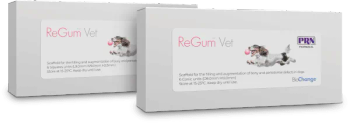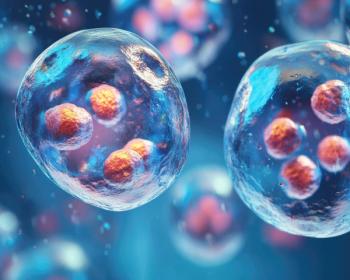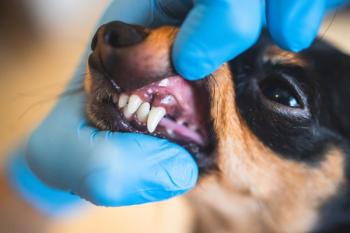
Examining new classifications of tooth fractures
When a dog or cat presents with lethargy or pale mucous membranes and anemia is suspected, the ultimate treatment and prognosis starts with successfully categorizing the problem.
When a dog or cat presents with lethargy or pale mucous membranes and anemia is suspected, the ultimate treatment and prognosis starts with successfully categorizing the problem.
Is the anemia regenerative or non-regenerative? Each form takes the practitioner down a different treatment path. Keep in mind that exposure of the pulp to the oral environment is the major dividing point in the care of dental fractures. If the pulp is exposed, it's considered a complicated fracture. If not, it's an uncomplicated fracture.
Like anemia, once the major category is identified, other criteria determine the final path for therapy. Is the fracture acute or chronic? Is the patient immature (< 9 months) or mature (> 9 months)?
All teeth are susceptible to fracture. In the mature dog, the maxillary canines and maxillary fourth premolars are most commonly traumatized, followed by the mandibular canines and incisors.
In the cat, the maxillary and mandibular canines are most common to fracture, followed by the incisors.
Anatomy
Enamel can be compared to a coat of armor protecting the underlying dentin and pulp. Enamel covers the crown, which is the visible part of the normal tooth in the oral cavity. Below the enamel is dentin that has small perpendicular tubules that communicate the sensations of pressure, cold and heat directly to the pulp. The pulp consists of richly vascularized and highly innervated connective tissue. When traumatized, the pulp reacts to irritants through inflammation. If untreated, inflammation may spread up and/or down the pulp, eventually becoming irreversible. Toxic products from damaged tissue and micro-organisms in the tissue sustain inflammation.
The pulp cavity consists of a pulp chamber in the crown and root canal in the root. An apical delta containing minute openings is present at the root apex.
Fracture classifications
With multiple classification systems borrowed from the human literature, uniform tooth-fracture terminology was not available in veterinary dentistry until recently. Depending on the source, fractures were classified by letters (A, B, C), numbers (1, 2, 3, 4) and words (simple and complex). In 2007, the American Veterinary Dental College classified tooth fractures into five categories based on the anatomical part of the tooth clinically affected.
Dental fracture classifications
UNCOMPLICATED FRACTURES
- Enamel infraction is an incomplete fracture (crack) of the enamel without loss of tooth substance. Enamel infractions are called craze lines. Craze lines do not progress and do not require additional care or follow-up (Photo 1).
- Enamel fracture is a fracture with loss of crown substance confined to the enamel (Photo 2). For small fractures, rough margins and edges can be smoothed, using a white stone bur on a water-cooled, high-speed handpiece. For larger fractures, the lost tooth structure can be restored.
- Uncomplicated crown fracture is a fracture of the crown that does not expose the pulp (Photo 3). Uncomplicated crown fractures in immature patients necessitate crown restoration and frequent radiographic follow-up because the pulp is close to the fracture site. If the fracture appears several millimeters away from the fracture site in the mature patient with uncomplicated crown fractures, only periodic clinical and radiographic examination is needed unless the patient has a proclivity toward chewing hard objects which could further fracture the tooth.
In those patients, metallic crown restoration would be indicated to help protect the tooth.
- Uncomplicated crown-root fracture does not expose the pulp. Removal of the unattached gingiva created by the fracture extension below the gum line via gingivectomy will allow continued periodontal health as long as at least 2 mm of attached gingiva remains.
COMPLICATED FRACTURES
- Complicated crown fracture exposes the pulp (Photo 4). When the pulp is exposed, generally there are two treatment options — extraction or root-canal therapy. The goal of root-canal therapy is to remove the inflamed or necrotic pulp and replace it with inert apex sealer and gutta percha before restoring the tooth to normal function. Extraction eliminates the exposed pulp as a conduit of bacteria and a source of pain.
If the pulp exposure is of short duration (hours), vital-pulp therapy is an option. During vital-pulp therapy, medication is placed on the exposed pulp and the tooth restored. The hope is that the pulp does not become permanently affected but will recover its insult and continue to produce dentin keeping the tooth vital.
The benefits? In most cases, the tooth can be saved, root-canal therapy does not have to be performed and the tooth remains vital. Downsides to this therapy include possible future leakage of the restoration, leading to painful pulpal necrosis that requires root-canal therapy or extraction. Because of these complications, most veterinary dentists recommend root-canal therapy when the pulp has been exposed due to the predictable long-term results.
If the immature pulp is infected, extraction is the treatment of choice unless the client chooses advanced apexification procedures that could save the tooth.
- Complicated crown-root fracture exposes the pulp (Photo 5). With an uncomplicated crown-root fracture, attention is given to eliminating the gingival defect the trauma created.
- Root fracture involves the root (Photo 6). If the tooth with root fracture is mobile or if the fracture occurs in the coronal three-quarters of the root, it should be extracted. If it is not mobile, the tooth could remain vital without additional care. Periodic clinical and radiograph examination is recommended.
Dr. Bellows owns Hometown Animal Hospital and Dental Clinic in Weston, Fla. He is a diplomate of the American Veterinary Dental College and the American Board of Veterinary Practitioners. He can be reached at (954) 349-5800; e-mail:
Newsletter
From exam room tips to practice management insights, get trusted veterinary news delivered straight to your inbox—subscribe to dvm360.






